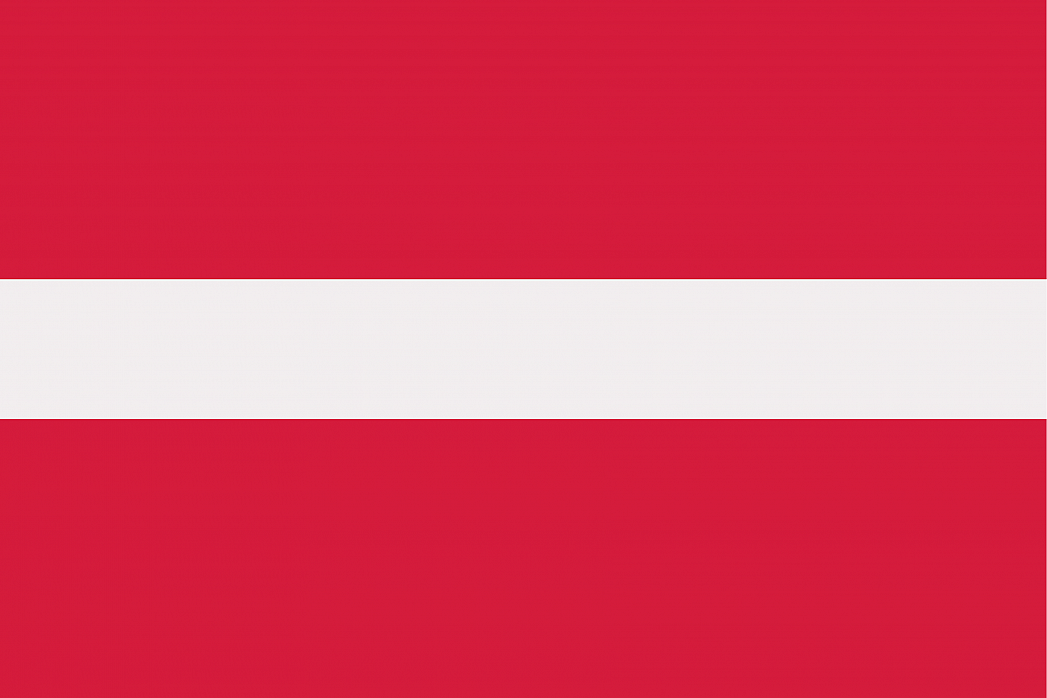The flag is representative of the blood shed by an ancient tribe leader who was physically hurt at war and covered in white sheets. Blood soiled the sheets' sides, leaving the part where he was lying white. The design of this flag was inspired by this story, which is known as the "Legend of the Wounded Leader".
From 25 August 1940, Latvia's flag was red with the golden mallet and sickle appearing at the left angle. Included above these two symbols were the letters LPSR which are Latin for Latvijas Padomju Sociālistiskā Republika. This inscription is done with the golden color and in a special font. The Soviet era flag was formally ousted on the 27th of February, 1990. Mikhail Gorbachev's reforms initiatives in the Communist Party influenced the restoration of the flag of independent Latvia on 27 February 1990 just a year before the official restoration of independence in Latvia.
Although a red and white flag of Latvia was first mentioned in the year 1279, the flag as we know it today was designed in 1917 by an individual called Ansis Cīrulis. This design, alongside other potential designs, were discussed at an art event. There were other proposals during the meeting with several incorporating red in it. Finally, the current design, color and measurements of the flag was accepted. The approved Latvian national flag became official on the 15th of June, 1921.
In 1989-1991, there was opposition in the Baltics countering the Soviet rule where a medium shade of red was used for the flag of Latvia as opposed to the current Carmine red striped flag. The difference in color came about due to the inadequacy of the right cloth and also a lack of understanding on the right particulars of the 1921-1937 Latvian flag. These versions were quickly replaced with the previously used flag.
This page was last modified on May 1st, 2018
More on Graphicmaps

Published on 2019-11-06
What is a Trade Embargo?

Published on 2019-11-04
Which Two Countries Used to Have the Same Flag?

Published on 2019-09-16
What Is the Only Two-Sided State Flag?

Published on 2019-09-16
Which Country Flag Looks Like the Texas Flag?

Published on 2019-08-29
Flags That Resemble the US Flag

Published on 2019-08-20
